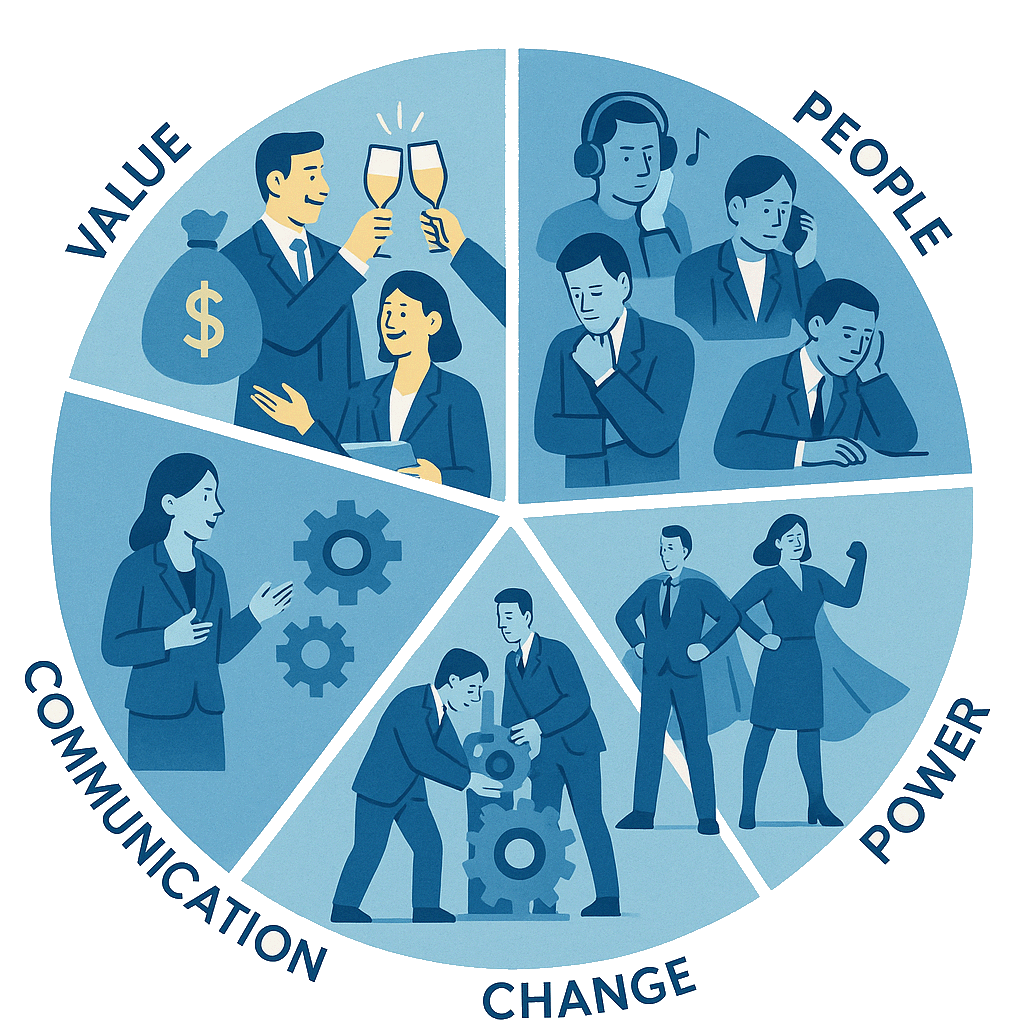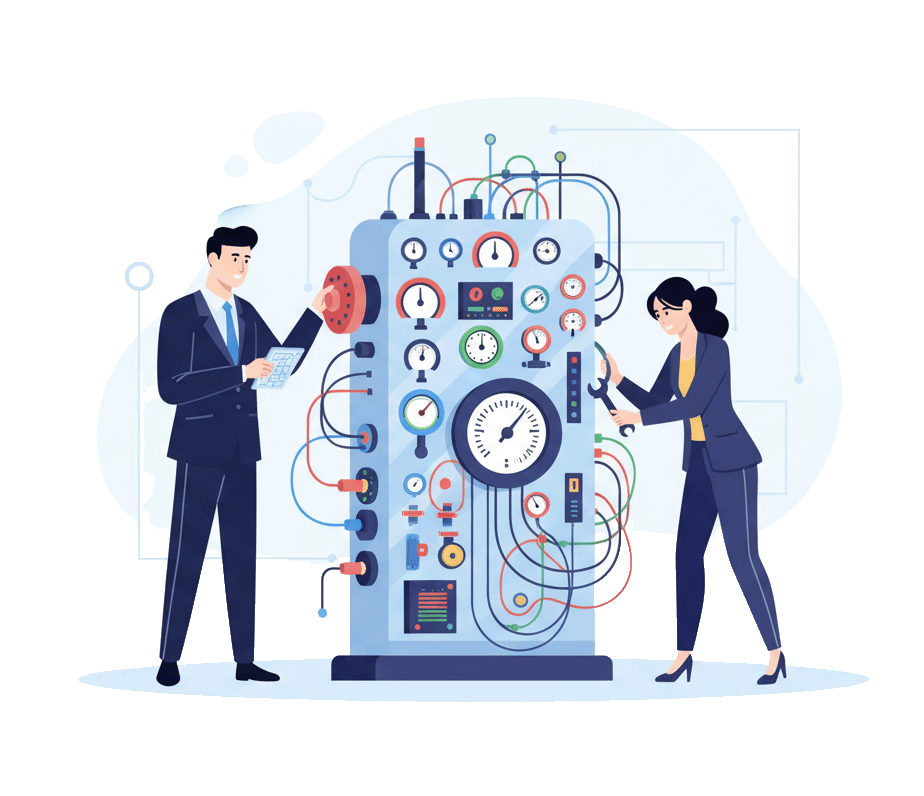INTRODUCING
Skills-Engagement Framework™️
The Skills-Engagement Framework™️ starts from the understanding that skills and engagement are two sides of the same coin. The better you ride a bicycle the more fun you have and the more you want to play, the faster you want to go, and the more challenges you take on. Engagement is how we work, how we stay in relationships, and how we produce anything worth having.
It applies, in different ways, to personal development and organizational development. The axes of growth are the same, even if the metrics and skills differ.
- Provides a 360 view of engagement
- Easy to remember format and skills
- Relevant for personal and organizational development
- Micro-skills based, useful for just in time learning
- Self diagnostic tool, or coupled with coaching

The Framework
The Five Pillars of Engagement
01
Value
Value is the currency of the realm, it is what we have to trade and improve people’s lives. We exist to create value. Our work is about creating value. How do you deliver value without being taken for granted? How do you demonstrate value early? How do you build a pipeline of value creation – a factory – and not get stuck in the details? How do you train your team to think in terms of value for customers first?
If you have these or similar questions click below to discuss one-on-one, or search the site and let us know a specific value skill you want to talk about.


02
People
Without people we would not be able to create or exchange value. People are complicated! We have entire universities dedicated to understanding people. The people skills we’ve collected leverage the latest insights and delivers it in easy to use pithy sayings, and rules of thumb. We give you and your team the vocabulary to safely talk about each other’s streanghts and weaknesses.
03
Power
Power is about extracting value from the world we live in – economically, safely, and sustainably. Each flower, each animal, and every human processes resources and produces something useful. This is not about manipulating people, but about putting in place, or adjusting the structures that allows each one of us to be successful, courageous, and generous. Power dynamics need to be adjusted when you want to shift gears and take your organization to the next level.


04
Change
Change is constant, dangerous, and necessary. Yet we resist it. We oppose it. We mis-understand it. Oftentimes we use the wrong tools for making change happen. In this pillar we talk about how to start, manage, and measure change. The status quo is the status quo for a reason – to keep things humming along. If you want to go to the next level you have to change your organization’s status quo.
05
Communication
Last, but not least, communication is key to the entire framework. Personality types, growing up, culture, power dynamics, and individual choices determine how effective we are in communication. Often times conflict persists because we do not have the words or the mechanisms to address it; we are afraid to even engage in conflict. However, conflict is healthy, and absolutely necessary when you want to take your organization to the next level.

